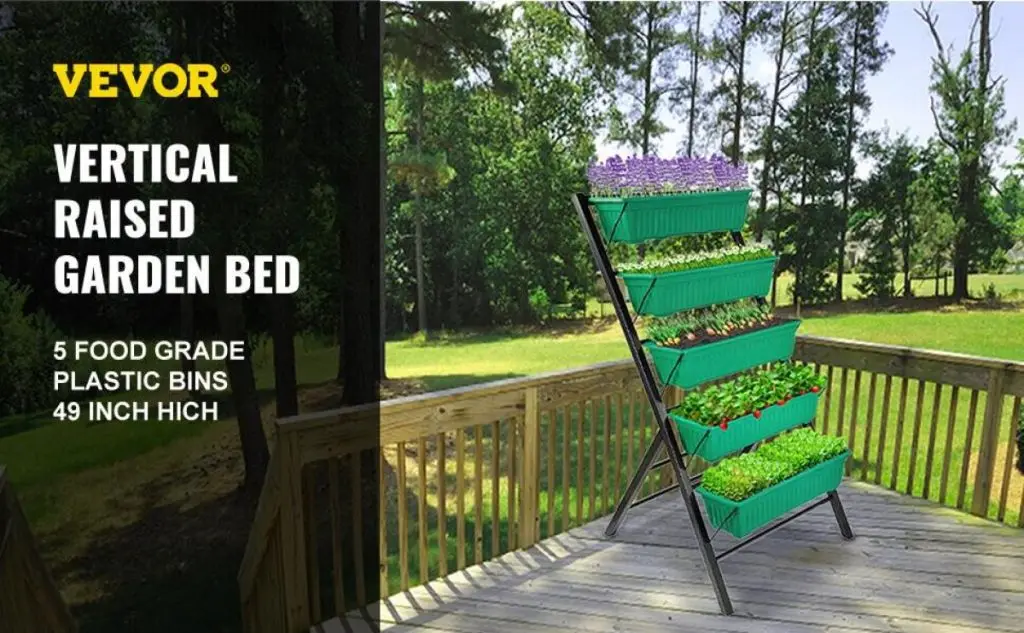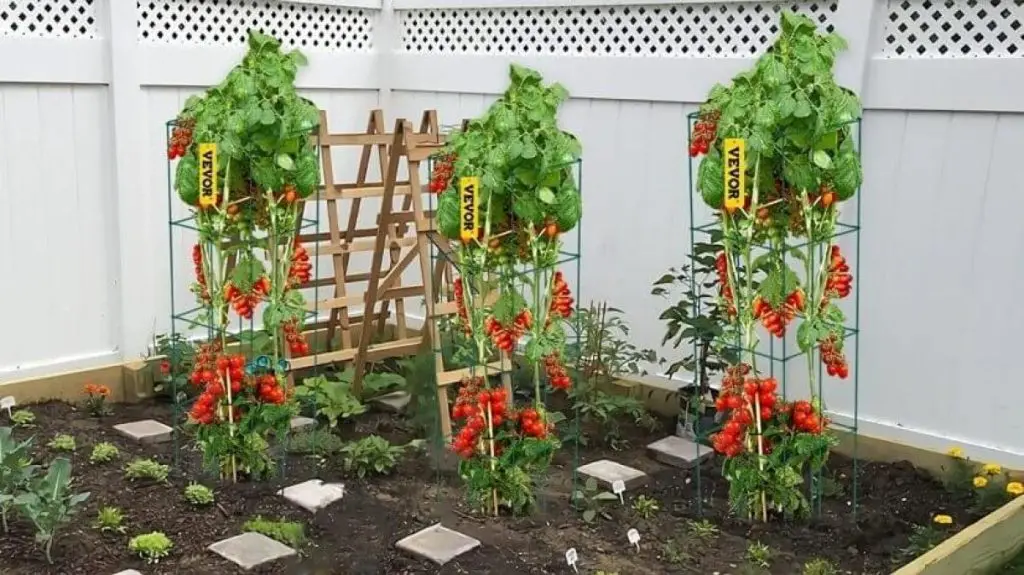Did you know that, once upon a time in 18th century France, raised garden beds were neither made of wood or metal? Instead, they were made of horse poop collected from the streets and stables and piled as high as 2 meters. Can you imagine how much poop you’d need to make garden beds that high?
It’s credit to the power of human innovation through brands like VEVOR that we can now choose between the luxury of metal vs wood raised garden beds, and no longer have to rely on horse poop for a thriving garden. With this luxury of choice, it has become important to choose the right type of raised garden beds. This guide will help you identify the key factors to consider when choosing between metal vs wood garden beds.
Table of contents
What Are Raised Garden Beds?
Raised garden beds are elevated planting structures gardeners use instead of planting on traditional floor beds.
Advantages Of Using Raised Garden Beds
There are a number of benefits these raised garden beds offer, including:
- Improved soil control: Raised garden beds make it easier to achieve the custom soil mixes your plants need.
- Enhanced drainage: Using raised garden beds can help gardeners minimize the risk of waterlogging and root rot.
- Easier weed control: Helps gardeners manage weeds more effectively because of the contained soil.
- Boosted accessibility: People with mobility limitations will find gardening easier and more comfortable with raised garden beds.
Common Materials for Raised Garden Beds
Raised metal beds come in different types and materials. Some of the materials most frequently used for raised garden beds include wood, metal, plastic, and concrete. In this article, our focus is on the two most popular choices: wood vs metal bed frames.
Metal Raised Garden Beds
Metal raised garden beds come with a sleek, modern aesthetic that many gardeners find really appealing. If you’re considering raised garden bed materials in their most natural state, durable, beautiful, sustainable, and affordable, you have to consider metal raised garden beds. They also have something else that’s important—and that’s safety.
Features of Metal Raised Garden Beds
- Raised garden beds made of metal are typically constructed from galvanized steel or aluminum.
- They are available in various shapes and sizes.
- Sometimes they come pre-assembled or require simple assembly.
Pros of Metal Raised Garden Beds
These are the pros of investing in metal garden beds.
- Durability: Raised garden beds made of metal are highly durable and can last for decades with proper care.
- Low maintenance: Metal resists rot and insect damage, requiring minimal upkeep.
- Modern aesthetics: The clean lines and sleek look of metal complement contemporary gardens.
Cons of Metal Raised Garden Beds
While metal garden beds offer a lot of benefits, they also come with some drawbacks, including:
- Heat retention: Metal can absorb and retain heat, potentially impacting plants in hot climates.
- Potential for rust: While galvanized steel offers good rust resistance, some maintenance may be required in humid environments.
Recommended For Your Project
Wood Raised Garden Beds

Wood raised garden beds provide a classic, natural aesthetic, blending seamlessly with most garden styles.
Features of Wood Raised Garden Beds
- Wooden raised garden beds are typically constructed from cedar, redwood, or pressure-treated pine.
- You have the option of customizing and using a wide range of design options to your taste.
- Raised garden beds made from wood may require assembly but they are generally easy to work with. You don’t need any technical knowledge to assemble it.
Pros of Wood Raised Garden Beds
These are the pros of using wood raised garden beds:
1. Natural look: Wooden raised garden beds have this warm and inviting aesthetic that can comfortably complement gardens of all styles.
2. Insulation properties: Wood has insulation properties which can help gardeners regulate soil temperature fluctuations.
3. Easier to customize: Wood can also be easily cut, stained, or painted to suit your preferences. You can literally make your raised bed into whatever taste you want.
Cons of Wood Raised Garden Beds
These are some of the drawbacks of using wood raised garden beds.
1. Susceptibility to rot: One reason gardeners frequently give when asked why they avoid wooden raised garden beds is because it can rot over time if not properly maintained with sealant or stain.
2. Maintenance requirements: They are maintenance heavy, requiring regular cleaning and reapplication of sealant or stains are needed.
Recommended For Your Project
Metal vs. Wood Raised Garden Beds: A Comparative Analysis
We’ve looked at the individual pros and cons of metal vs. wood raised garden beds, now let’s dig a bit further into a comparative analysis:
Durability and Longevity
Two things that should inform your choice in the metal vs wood raised garden beds debate are durability and longevity.
Lifespan of Metal Raised Garden Beds
Metal raised beds boast exceptional durability. This is one key area where metal comes up tops in the age long raised garden bed metal vs wood debate. You can use raised garden beds made of metal for around 25-30 years. Neither plastic or ordinary wooden beds come close to that.
Lifespan of Wood Raised Garden Beds
Ordinary wooden raised garden beds do not possess anywhere close to the longevity metal raised garden beds possess, but when pressure-treated, you could get some decent years out of them. However, it will still require proper and regular maintenance or it will succumb to rot over time.
Maintenance Requirements
This is another area where both wooden and raised garden beds can be laid side-by-side and compared. Let’s see how they both perform in the raised garden bed wood vs metal debate.
Care and Maintenance For Metal Raised Garden Beds
Metal raised garden beds can go long periods with minimal maintenance. You’re good to go with the occasional cleaning and touch-up painting if in harsh environments.
Care and Maintenance For Wood Raised Garden Beds
All things made from wood require regular cleaning. Wooden raised garden beds are no different. You will need to constantly apply sealant or stain, and sometimes replace rotted parts.
Environmental Impact
How does the raised garden bed metal vs wood conversation do when it comes to environmental impact?
Sustainability of Metal Raised Garden Beds
Recycled metal is the better sustainable option but the manufacturing process is energy intensive. Tough one there, right?
Sustainability of Wood Raised Garden Beds
Wood from sustainably managed forests is a more eco-friendly choice than metal. However, wood treatment typically contains harsh chemicals.
Cost Comparison
Sometimes the wood vs metal bed frame conversation can come down to cost. Here’s how they both compare:
Initial Cost
Metal beds can be slightly more expensive upfront than similarly sized wood beds. But that could be a simplistic way of looking at things. Here’s why:
Long-Term Cost Considerations
Metal’s low maintenance requirements can offset the initial high cost over time. On the other hand, wood’s ongoing maintenance needs can add to the long-term expense.
Choosing The Right Material For Your Raised Garden Beds
Neither metal nor wooden raised garden beds are right or wrong of their own accord. But when you take into account your unique gardening needs, then it becomes very important that you make the right decision.
Climate and Weather Conditions
Climate and weather conditions are at the top of this list for a reason. Expert gardeners always take this into consideration when choosing metal beds for their gardens.
Metal
Metal beds might not be the best option for extremely hot climates as they retain heat, which could potentially harm your plants. However, they typically do well in cooler regions where they order excellent durability against harsh weather.
Wood
Wood raised beds can work in most climates, but humid environments may accelerate wood rot if not properly treated. Choosing naturally rot-resistant wood like cedar can help tackle this particular issue.
Personal Aesthetic Preferences
When it comes to aesthetic preference, what’s the best option to consider?
Metal
If you’re the type who prefers a modern design for your garden, then metal beds can complement contemporary or minimalist garden styles. They stand out visually and can give your outdoor space that industrial edge.
Wood
Wood beds have this classic, natural aesthetic that goes really well with traditional garden designs. You can paint or stain them to match your personal taste, which brings out that versatility most gardeners love.
Budget Considerations
Budget is an important consideration in the metal vs. wood raised garden bed debate.
Metal
As already pointed out, metal raised beds generally come with a higher upfront cost, but their durability and low maintenance might save you money in the long run.
Wood
Wood beds are typically less expensive initially, especially if using locally available materials. However, recurring maintenance costs, like reapplying sealant or replacing rotted wood, should be factored in to have a better picture.
Environmental Concerns
Environment conscious gardeners would definitely love to see how both materials compare:
Metal
Using recycled metal for your beds is an eco-friendly option, though the manufacturing process for new metal can be energy-intensive.
Wood
If you tend to gravitate towards sustainable choices, then you should know wood is a renewable resource. Therefore, sourcing wood from sustainably managed forests is an environmentally responsible choice. However, pressure-treated wood may contain chemicals that could leach into the soil.
Summary of Metal vs. Wood Raised Garden Beds
When choosing between metal vs. wood raised garden beds, consider all the key factors mentioned in this article, such as durability, maintenance, cost, aesthetics, and environmental impact. Metal beds are exceptionally durable and perfect for modern aesthetics.
That makes them a great choice for those willing to invest in long-term value. On the other hand, wooden beds give off that natural customizable look that easily blends with traditional gardens but takes on more financial cost via more maintenance over time.
That said, the best material for your raised garden bed depends on your specific needs, climate, and personal preferences. For the best of these factors plus quality and versatility, explore VEVOR’s range of raised garden beds to find the perfect match for your garden.





